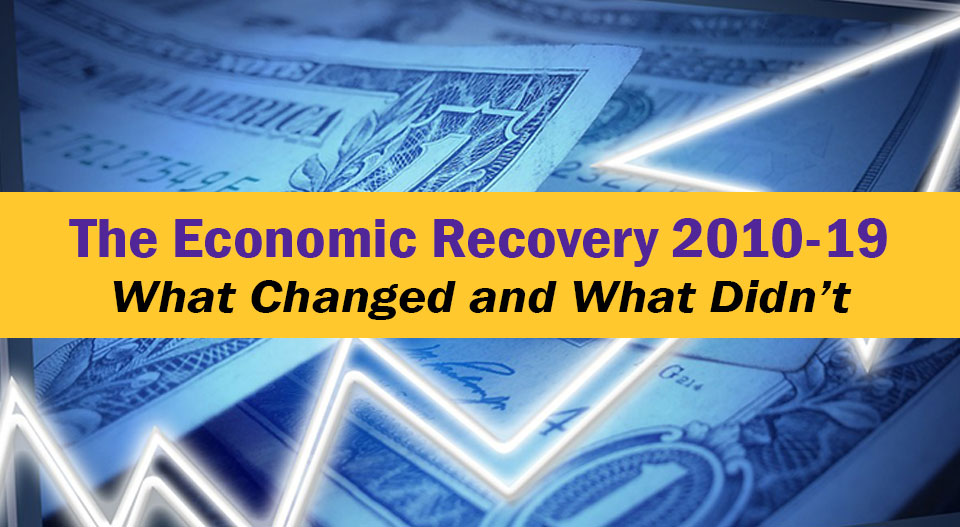
Wealth Distribution
Relative to before the financial crisis of 2007-2009, wealth inequality increased during the economic recovery. The Federal Reserve tracks wealth distribution in the United States through their Distributional Financial Accounts (DFA) database. The Distributional Financial Accounts provide quarterly estimates of the distribution of U.S. household wealth, beginning with the third quarter of 1989. The table below is a summary of that data and shows how U.S. household wealth was distributed in the fourth quarter of five-year periods beginning with 1990.
Data for four percentile groups is presented: the top 1% (the 99th percentile), the next 9% (the 90th–99th percentile), the next 40% (50th–89th percentile) and the bottom 50%. Percentile groups split up the total net worth of households in the United States. The top 1% represents those households having more net worth (wealth) than 99% of the households in the United States. Net worth is defined as total assets minus total liabilities (debt).
Despite the long period of economic growth, getting more of the financial pie has been a struggle for those in the bottom 50% of wealth distribution in the United States. The bottom 50% owned 4.0% of total net worth in the United States in 1995. The percentage of net worth owned by the bottom 50% steadily declined after the turn of the century and dropped to 2.3% in 2005. However, the financial crisis of 2007-2009 hit the bottom 50% particularly hard. Following the crisis, the bottom 50% owned only 0.7% of total net worth in the United States in 2010. The record economic expansion of the last decade improved that number, but not much. In 2019 the bottom 50% comprised only 1.5% of total net worth in the United States, much less than the 3.9% in 1990, 4.0% in 1995, 3.4% in 2000, and even the 2.3% in 2005.
The biggest winner in wealth distribution was the top 1%. In 1990, the top 1% owned 23.3% of total net worth in the United States. After a slight drop between 1995 and 2000, the percentage of net worth owned by the top 1% increased every five-year period. The top 1% owned 28.3% of total net worth in 2005 and saw an increase to 29.5% in 2010 following the financial crisis. In 2019, a record high of 32.9% of net worth was owned by the top 1%. The top 10% owned 70.2% of total new worth in 2019 compared to 68.5% in 2010 and 60.2% in 1990.
Wealth Distribution by Percentile Group
Source: Federal Reserve – Distributional Financial Accounts
| Top 1% | Next 9% | Next 40% | Bottom 50% | |
| 1990 | 23.3 | 36.9 | 35.9 | 3.9 |
| 1995 | 28.3 | 33.4 | 34.2 | 4.0 |
| 2000 | 27.7 | 34.8 | 34.1 | 3.4 |
| 2005 | 28.3 | 36.4 | 33.0 | 2.3 |
| 2010 | 29.5 | 39.0 | 30.8 | 0.7 |
| 2015 | 31.6 | 38.0 | 29.4 | 1.1 |
| 2019 | 32.9 | 37.3 | 28.3 | 1.5 |
For further information:
1. Federal Reserve – Distributional Financial Account Data
Distribution of Household Wealth

CBEI Series: The Economic Recovery 2010-19: What Changed and What Didn’t
Part 1: Overview
Part 2: Wealth Distribution
Part 3: Manufacturing Employment
Part 4: Trade with China … and the Rise of Vietnam
Part 5: Funding the U.S. Government – Corporate vs. Individual Taxes
Part 6: Corporate Debt and Collateralized Loan Obligations

Kevin Bahr is a professor emeritus of finance and chief analyst of the Center for Business and Economic Insight in the Sentry School of Business and Economics at the University of Wisconsin-Stevens Point.
